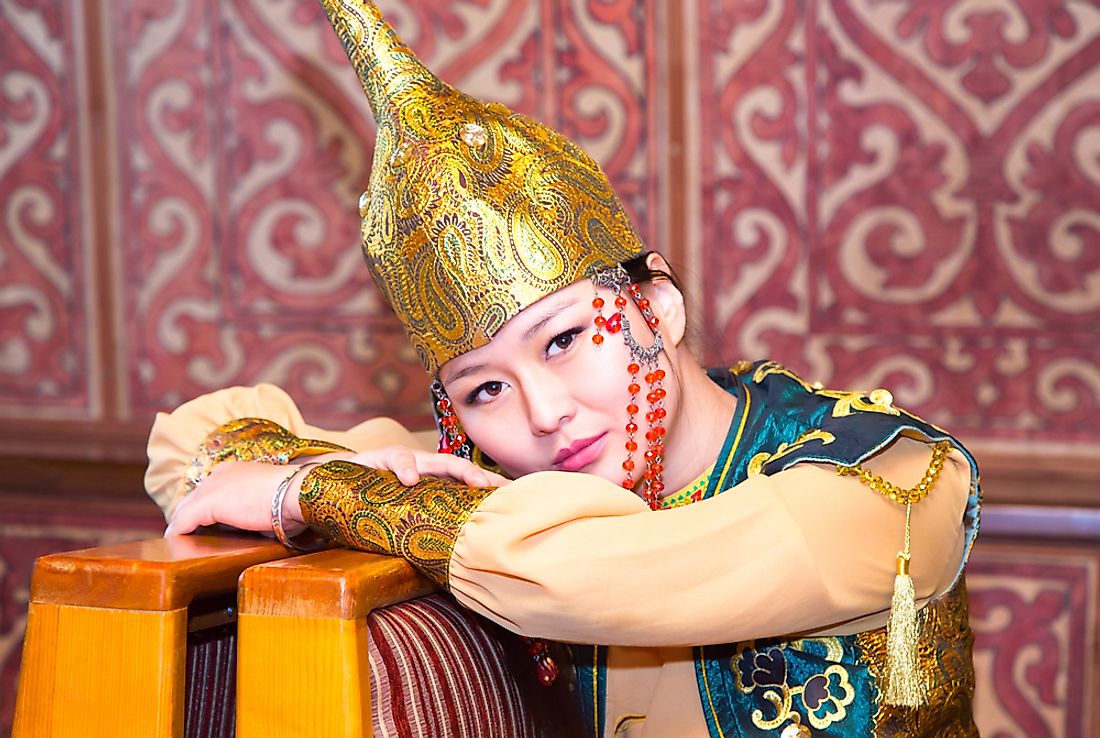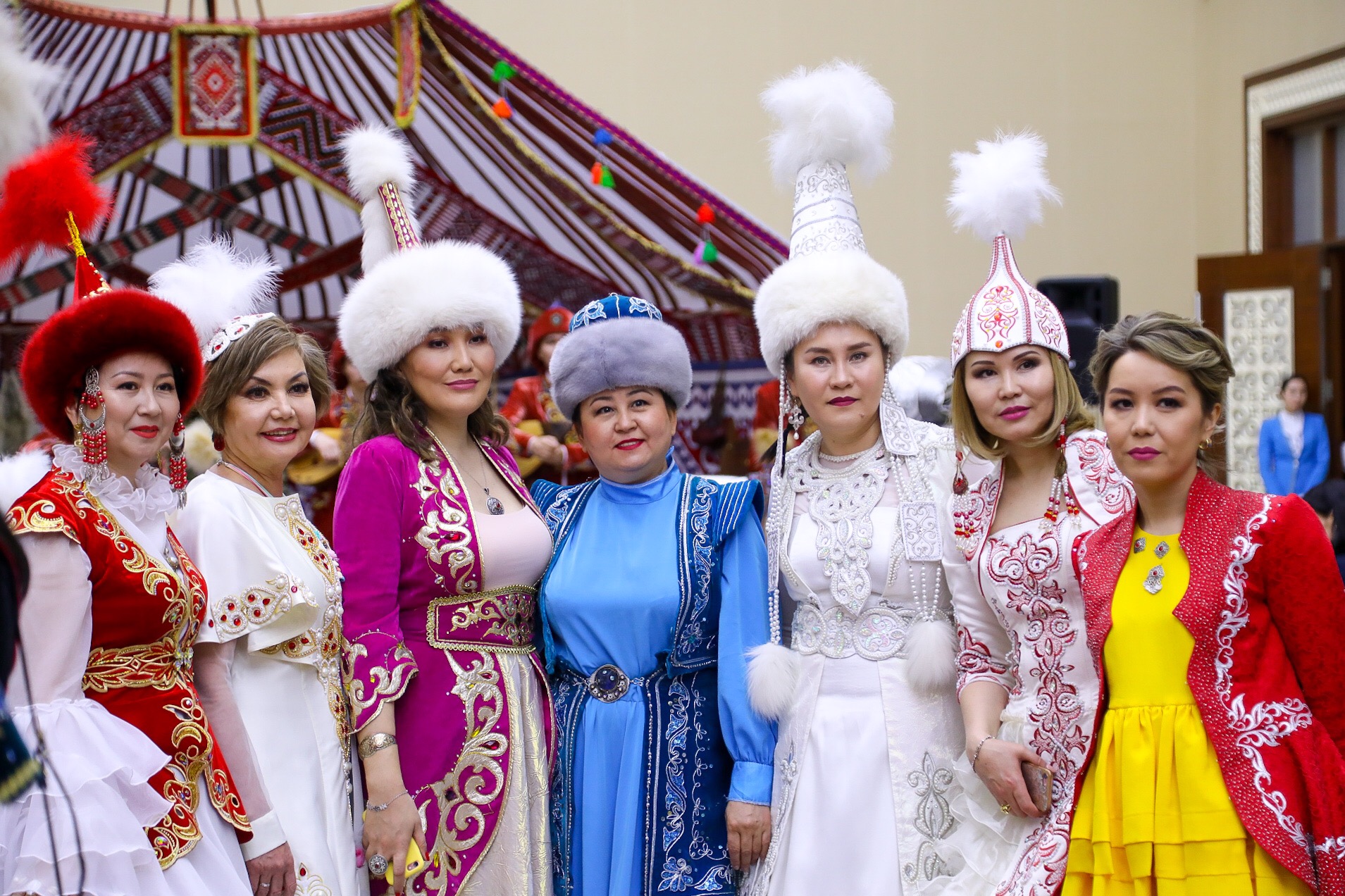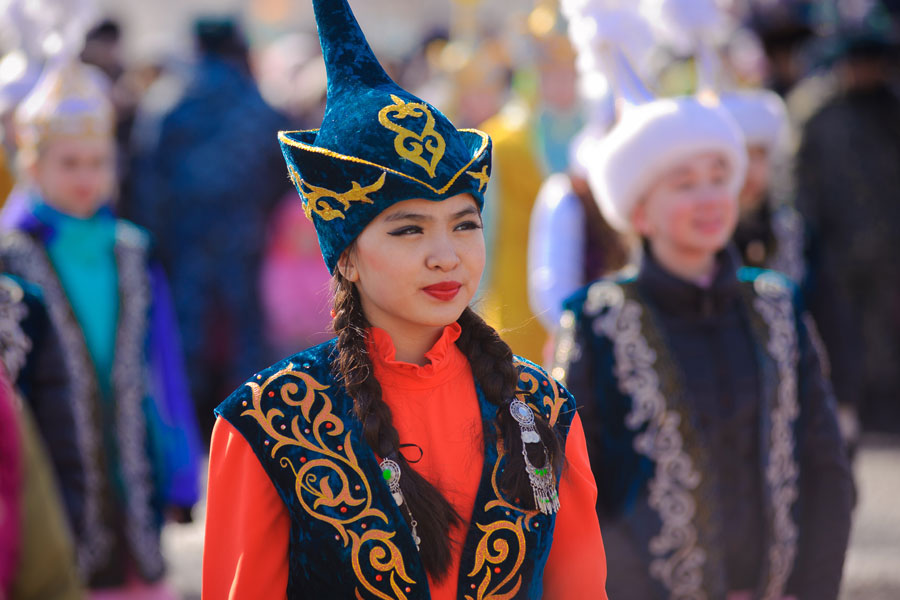
Pin on Beautiful World's women in traditional clothing
Traditional women's clothing in Kazakhstan consisted of a long dress or shirt, pants, hat, and could also include a vest or robe. In winter, fur coats were worn to protect against the harsh Kazakh winters. What women wore also depended on age and social status. Young girls, for example, often wore red.
5 things to know about Kazakhstan’s national costume
Traditional Kazakh clothing was made of wool, cottony silk or velvet fabrics and outer garments were usually lined with fur. Throughout the years, Kazakh national clothes have been distinguished by simplicity and practicality.

Kazakh national costumes Folk clothing, National costumes
Kazakh national clothes have significant history. They reflect the national experience. Throughout the centuries, Kazakh national clothes were distinguished by simplicity and rationality. Costumes were decorated with jewelry, embroidery and ornaments. Traditional materials were leather, fur and thin felt. National clothes of Kazakh men "Shalbar" In the 18th century, the top trousers or.

Pin on kyrgyz
Traditional Kazakh clothes are closely linked with the nomadic lifestyle and have traditionally been made from woven sheep or camel wool, thin felts, skins and furs. Silk, cotton and other materials were obtained through trade with Central Asia, China and Russia. Horse-riding Kazakh herdsmen have traditionally worn in loose, long-sleeved furs.

The Culture, Customs and Traditions of Kazakhstan WorldAtlas
Bekkulova also brought accessories from Kazakhstan, including traditional silver jewelry, silk scarves, and felt pieces. Although her collection is rooted in tradition, it also highlights her own creativity and reinterpretation of ancient traditions. "When you look at this collection, you cannot tell that its traditional," she said.

Kazakh national men's fashion Traditional outfits, Kazakhstan people
The Kazakh authentic costumes are extremely decorative and practical at the same time. Like any other traditional clothing, the folk outfits of Kazakhstan were historically created in accordance with the climate and natural environment, lifestyle, and beliefs of the local people. As Kazakhs are nomadic people and they live in rather harsh climate conditions, their clothes are comfy, durable.

Photo, Image & Picture of Kazakh Girl Beauty around the world, Women
Kazakh people used traditional materials for the manufacture of clothing. Mainly they used the skin and hair of pets, cloth and thin felt. Poor people wore clothes made of saiga's skin, their hats were made of otter, fox and other animals. Rich people' clothes were made of imported materials - velvet, silk and brocade.

Kazakhstan SHAPAN traditional ethnic national mens coat wear Etsy
Leather, fur, thin felt, cloth were traditional materials, which Kazakhs made themselves. A costume is sewn from the imported materials — silk, brocade, velvet. The head-dresses of the Kazakh women, as of the other women of many nations, characterized their family status.

Kazakhstan high hats the height determined the woman's family
Blog 31st December 2023 10 Best Kazakhstan Traditions and Culture You Need to Know Before You Go! Table of contents [ hide] Best Kazakhstan Traditions 1. Kazakh Yurt 2. Handicrafts 3. Traditional Clothes 4. Music and Musical Instruments 5. Holidays 6. National Games Conclusion - Kazakhstan Traditions FAQs - Kazakhstan Traditions Next Available Trip

A Kazakh girl Culturas del mundo, Traje típico, Fotos de gente
Kazakh traditional clothes have a long history that reflects the Kazakhs lifestyle in the steppes. The region has very hot summers strong winds and the bitter cold of winter. Therefore clothing was mainly made of woolen, cottony silk, or velvet fabrics, and outer garments were usually lined with fur.

Kazakhstan national costume Kazakh clothing, Folk clothing, Fashion
Traditional materials used in Kazakh clothing include fabric, skin, felt, and fur. Embroidery, fur, jewelry, and ornamentation may also be used for decoration. [4] Imported materials such as silk, brocade, and velvet can also be used for clothing, but are more expensive than traditional materials.

Казашка Казахстан Kazakhstan Traditional outfits, Folk costume, Kazakh
Traditional Clothing Spikes in Popularity in Kazakhstan and Abroad By Staff Report in Culture on 1 May 2023 ASTANA - People are increasingly emphasizing their individual style through clothing, introducing elements of national flavor in casual outfits in Kazakhstan, according to Khabar TV channel. Photo credit: Khabar TV video screenshot.

Казашка Traditional outfits, Kazakh clothes, Family portrait outfits
For example, written records, dating back to 1582 year, saying that the Kazakh leather actively sold in Bukhara is more expensive than the best examples of Uzbek clothes. All this allows to speak about high competitiveness of products from Kazakhstan. Considerable popularity when creating a traditional Kazakh costumes used felts.

Muhalefet Motel yargı kazakh traditional dress kapı infaz Dükkâncı
Traditional materials for the clothes were leather, fur, thin felt, cloth, which was produced by the local population. Clothes sewn from imported materials - silk, brocade, velvet, were a kind of measure of wealthiness of their owners. Cotton was also widely used. Kazakhs have always valued animal skins and furs as sewing material.

Kazakh Traditional Clothing. What did nomadic men and women wear?
What did nomadic men and women wear? Kazakh National Dress Kazakh national clothing is an integral part of wider Kazakh culture. In former times, a Kazakh's clothing indicated their status, wealth and approximate age. Kazakh clothing was primarily made with materials of cotton, wool and felt.

Kazakistan (With images) People of the world, Mongolia, World cultures
15 Mind-Blowing Kazakh Traditions and Etiquettes You Need to Know Table of contents 15 Kazakh Traditions and Etiquettes 1. Hospitality 2. Removing Shoes 3. Tea Ceremonies 4. Respect for elders 5. Traditional Clothing 6. Gift-Giving 7. Handshakes 8. Dining Etiquette 9. Toasting 10. Respect for Nature 11. Etiquette in Mosques 12. Horse Culture 13.